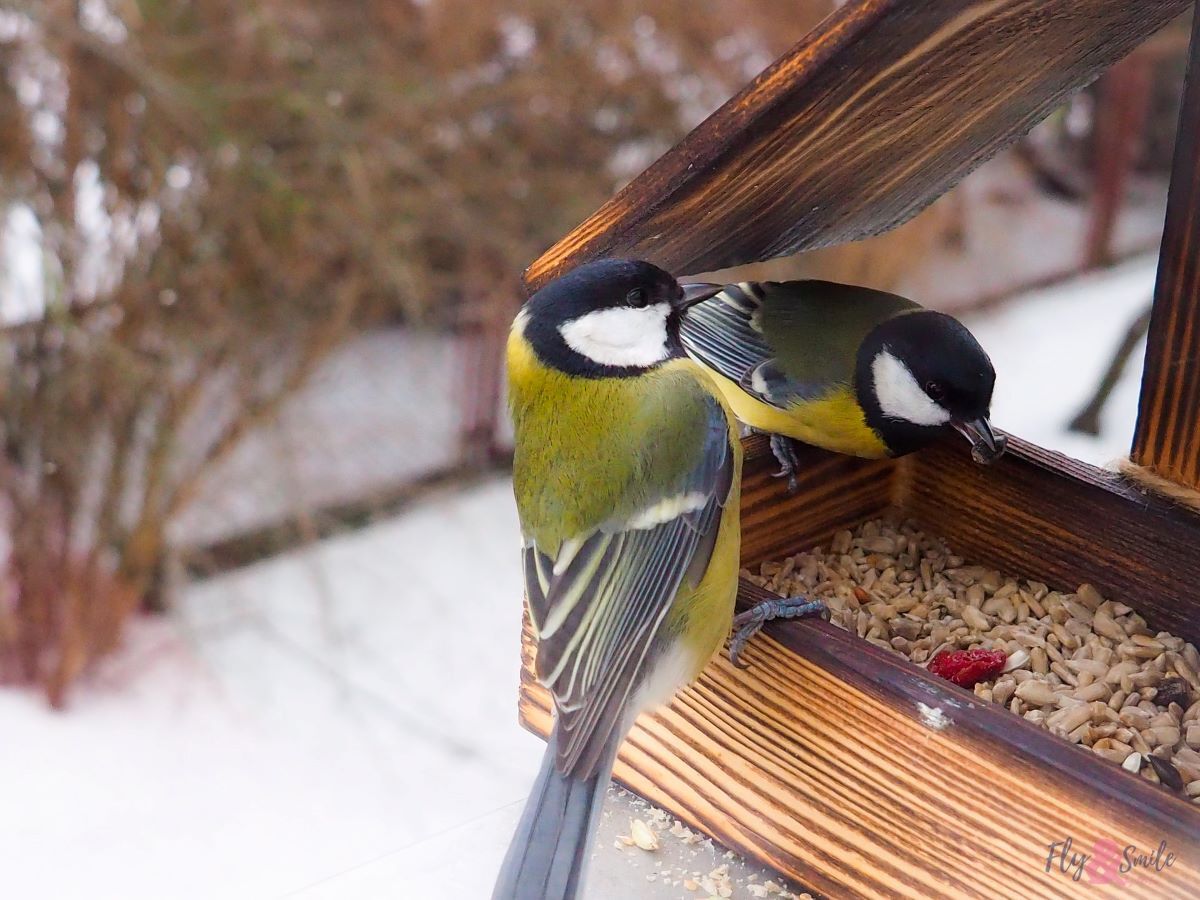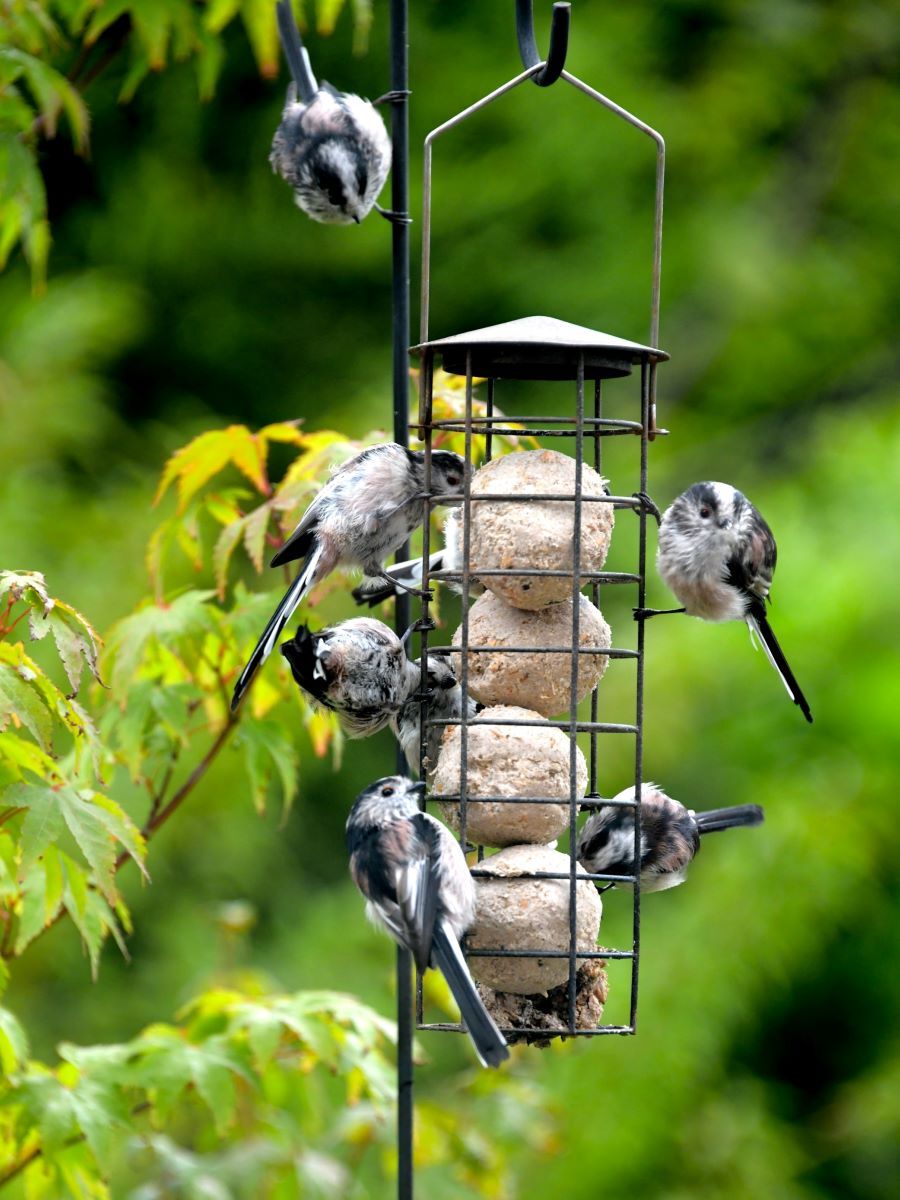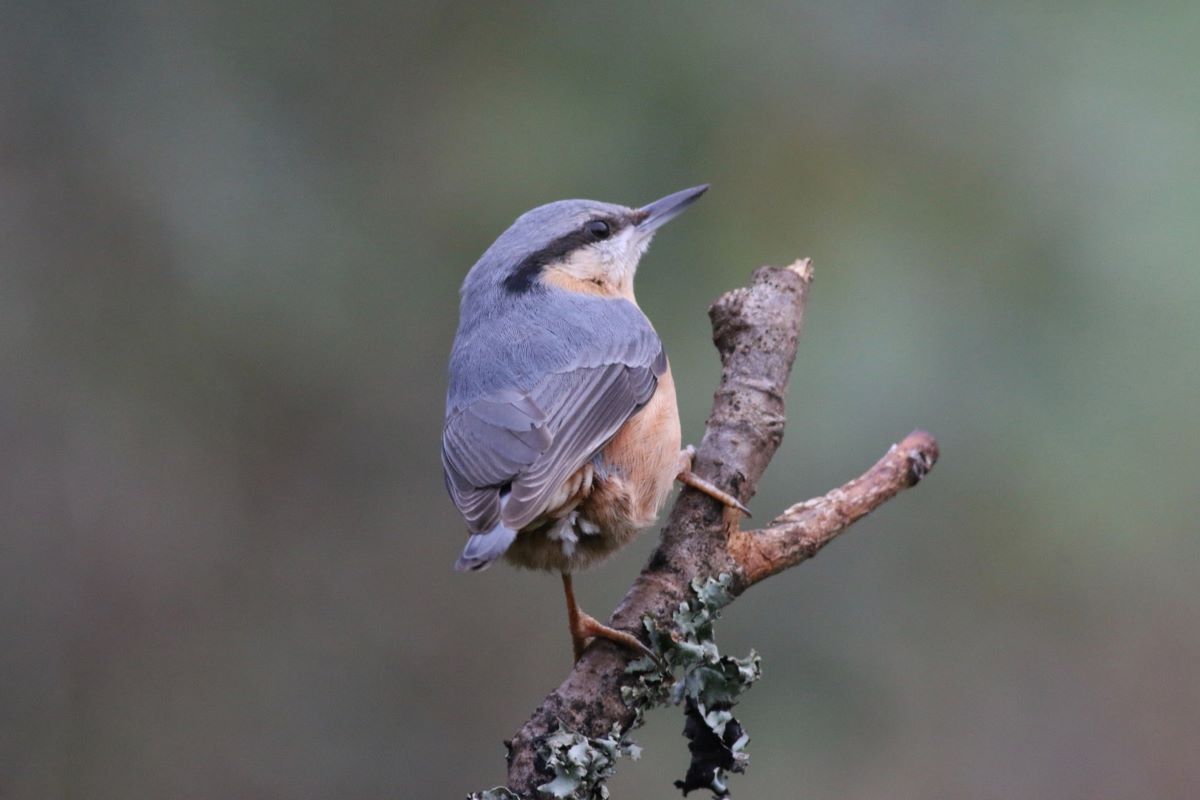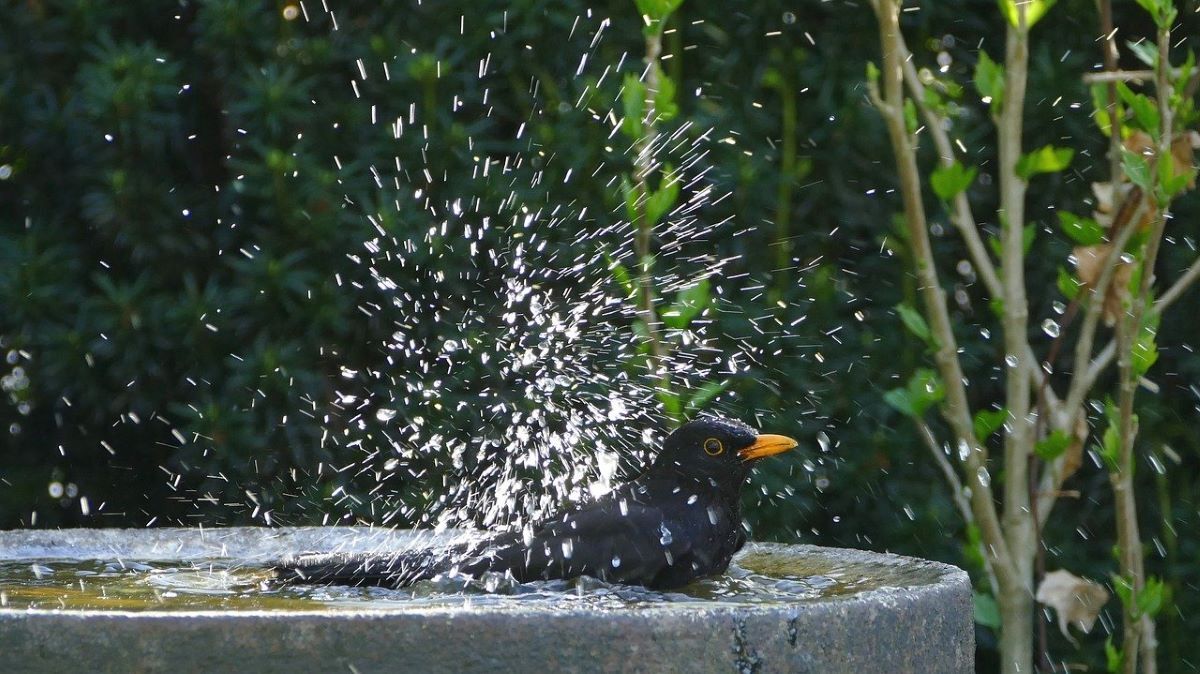
Continuing her series on gardening for wildlife, Anna Andrews looks at how to attract birds to your garden
Ok, I know it’s not really ‘gardening’, but probably the best and most immediate way to help wildlife is to feed the birds, and virtually any outdoor space can be used whether you have a garden, a balcony or just a window box. We Brits spend between £2m and £3m on bird-feeding products annually, according to the British Trust for Ornithology, and there is a bewildering choice available.
If you offer birds a food source, they will almost certainly begin visiting it. It can take a little while, but once your feeder is on their regular route they will come every day – so, if you start, you really have to keep up the supply, as they will come to rely on ‘your’ food, particularly in the winter. Feeding the birds in our gardens is making a positive difference to their survival: a study of garden feeding of British bird communities documented in Nature Research calculates that the amount of food we provide each year could potentially sustain more than 196 million birds.
Even if you don’t have a garden, you can still feed the birds. Clear plastic feeders that stick on the outside of your window will attract birds, once they have become accustomed to seeing you at close quarters; but some birds are untidy eaters and you may have to be prepared for some mess on the glass or windowsill. A small price to pay, I reckon. Wild bird seed is the best thing for these feeders: if you put out kitchen scraps, it will attract feral pigeons or worse; and bread, or food with salt in it, can harm wild birds.
If you don’t want to put up a bird table or feeder pole, you can still offer the birds some food from a feeder, hung from a hanging-basket bracket, or a tree in your garden – or even some overhanging branches from next door’s garden. Fat balls are ideal for this and are great for birds like blue tits, which are quite acrobatic. Fat balls are still often sold in plastic net, which can trap birds, so a proper fat-ball holder is much safer (they aren’t terribly expensive).

To attract the widest variety of birds, the best food seems to be sunflower ‘hearts’: the innermost part of the seeds. They aren’t cheap, but there’s no waste. It’s best to put seed out either on a bird table, or in a seed feeder with a saucer which fixes underneath to catch most of what the birds drop. An unfortunate ‘by-product’ of too much dropped food is the possibility that a rat will find it and become a regular visitor.
Depending on where you live and what kind of ‘habitat’ there is around your home, you may find a wide variety of bird species will visit your feeder. Some birds – blackbirds and dunnocks, for example – prefer to feed on the ground, but sparrows, finches and tits are quite happy on bird tables and hanging feeders. If you are lucky enough to live in an area where there are plenty of mature trees, you might get woodpeckers or nuthatches, whose ability to feed completely upside-down is a wonder to behold.

Unfortunately you may also get squirrels, magpies, jackdaws and wood pigeons – it’s very frustrating when you see your dearly bought sunflower hearts disappearing into a fat pigeon – and the occasional rat; but, as my husband frequently reminds me, they are all wild creatures and they all need to find food.
Birds also need water to drink and for bathing, and they don’t expect a posh bird bath. A large, shallow dish (for example, a planter saucer), filled with clean water, is often more welcome, because some purpose-made ‘bird baths’ are either too deep, or too shallow, or too slippery for the birds to feel safe. Even in really cold weather, birds still need to bathe to keep their feathers in good-enough condition to insulate their bodies. It can be a great pleasure seeing how one sparrow will set the example, having a good splash, before being joined by several of its extended family to shower and drink each other’s bath water. Even when bird baths freeze solid, the birds will often still try to drink from the very edge, where the ice first begins to melt: proof of how much they need the water you put out for them.

As well as offering the birds a wash, it is also important to keep the feeders and dishes clean. It can be quite a chore, but they get mucky really quickly, especially in wet weather, and can harbour lots of very harmful bacteria. Sadly, there is a particularly unpleasant disease to which some species – finches in particular – are especially prone, and which is spread through contaminated feeders. I keep an old bucket and washing-up brush just for cleaning my bird feeders and I try to wash them all every month – it takes a while if you have lots! Hot soapy water or disinfectant solution is fine, as long as everything is rinsed and dried thoroughly before refilling them.
Take part in the Big Garden Birdwatch – 1 hour between 29 and 31 January
The RSPB (Royal Society for the Protection of Birds) has been running this annual birdwatch since 1979 and more people take part every year. You don’t have to have a garden or any special equipment; if your window overlooks a park or even a hedge, or if you can get out to a local park or nature reserve – for your permitted daily exercise, of course – you can make a note of any birds you see, and send in your ‘sightings’ to be included in the national count. It really does give useful information to ornithologists about how some species are increasing and others are in decline. See Taking Part in Big Garden Birdwatch – RSPB, for further information. You only need an hour (which you can break into smaller periods if you really need to) at some point between Friday 29 and Sunday 31 January. If you have children, they might like to join in and there are quizzes and a ‘live’ birdwatch on the RSPB website this year, to try to help offset that lockdown boredom.
I hope you enjoy it.





